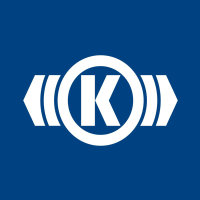
Knorr Bremse AG
XETRA:KBX


| US |

|
Johnson & Johnson
NYSE:JNJ
|
Pharmaceuticals
|
| US |

|
Berkshire Hathaway Inc
NYSE:BRK.A
|
Financial Services
|
| US |

|
Bank of America Corp
NYSE:BAC
|
Banking
|
| US |

|
Mastercard Inc
NYSE:MA
|
Technology
|
| US |

|
UnitedHealth Group Inc
NYSE:UNH
|
Health Care
|
| US |

|
Exxon Mobil Corp
NYSE:XOM
|
Energy
|
| US |

|
Pfizer Inc
NYSE:PFE
|
Pharmaceuticals
|
| US |

|
Palantir Technologies Inc
NYSE:PLTR
|
Technology
|
| US |

|
Nike Inc
NYSE:NKE
|
Textiles, Apparel & Luxury Goods
|
| US |

|
Visa Inc
NYSE:V
|
Technology
|
| CN |

|
Alibaba Group Holding Ltd
NYSE:BABA
|
Retail
|
| US |

|
3M Co
NYSE:MMM
|
Industrial Conglomerates
|
| US |

|
JPMorgan Chase & Co
NYSE:JPM
|
Banking
|
| US |

|
Coca-Cola Co
NYSE:KO
|
Beverages
|
| US |

|
Walmart Inc
NYSE:WMT
|
Retail
|
| US |

|
Verizon Communications Inc
NYSE:VZ
|
Telecommunication
|
Utilize notes to systematically review your investment decisions. By reflecting on past outcomes, you can discern effective strategies and identify those that underperformed. This continuous feedback loop enables you to adapt and refine your approach, optimizing for future success.
Each note serves as a learning point, offering insights into your decision-making processes. Over time, you'll accumulate a personalized database of knowledge, enhancing your ability to make informed decisions quickly and effectively.
With a comprehensive record of your investment history at your fingertips, you can compare current opportunities against past experiences. This not only bolsters your confidence but also ensures that each decision is grounded in a well-documented rationale.
Do you really want to delete this note?
This action cannot be undone.

| 52 Week Range |
54.76
81.9
|
| Price Target |
|
We'll email you a reminder when the closing price reaches EUR.
Choose the stock you wish to monitor with a price alert.

|
Johnson & Johnson
NYSE:JNJ
|
US |

|
Berkshire Hathaway Inc
NYSE:BRK.A
|
US |

|
Bank of America Corp
NYSE:BAC
|
US |

|
Mastercard Inc
NYSE:MA
|
US |

|
UnitedHealth Group Inc
NYSE:UNH
|
US |

|
Exxon Mobil Corp
NYSE:XOM
|
US |

|
Pfizer Inc
NYSE:PFE
|
US |

|
Palantir Technologies Inc
NYSE:PLTR
|
US |

|
Nike Inc
NYSE:NKE
|
US |

|
Visa Inc
NYSE:V
|
US |

|
Alibaba Group Holding Ltd
NYSE:BABA
|
CN |

|
3M Co
NYSE:MMM
|
US |

|
JPMorgan Chase & Co
NYSE:JPM
|
US |

|
Coca-Cola Co
NYSE:KO
|
US |

|
Walmart Inc
NYSE:WMT
|
US |

|
Verizon Communications Inc
NYSE:VZ
|
US |
This alert will be permanently deleted.
 Knorr Bremse AG
Knorr Bremse AG
Knorr Bremse AG
Investor Relations
Knorr-Bremse AG, a stalwart in the field of braking systems, has evolved into an industrial powerhouse, deeply embedded in both the rail and commercial vehicle sectors. Established in 1905, its legacy began with the pioneering work of Georg Knorr in Germany, where he sought to revolutionize the braking mechanisms for trains. Today, the company stands as a beacon of engineering excellence, capitalizing on its century-long expertise to innovate and enhance safety technologies across its expansive portfolio. As a leading supplier, Knorr-Bremse integrates advanced control systems, intelligent electronics, and environmentally friendly solutions, ensuring smoother and safer journeys for millions of commuters and freight operators worldwide.
The company’s financial robustness is largely derived from its strategic focus on diversification and technological superiority. In the rail division, Knorr-Bremse designs and manufactures a spectrum of products ranging from braking systems to on-board digital solutions, catering to the demand for efficient and fail-safe railways. Meanwhile, in the commercial vehicle sector, Knorr-Bremse supplies systems that enhance vehicle safety, comfort, and efficiency, including innovative driver assistance technologies and automated driving functions. By continuing to invest in R&D and adapting to trends in digitization and sustainability, Knorr-Bremse ensures its products remain indispensable to its global clientele, driving steady revenue streams and maintaining its position as an industrial leader within the mobility sector.

Knorr-Bremse AG, a stalwart in the field of braking systems, has evolved into an industrial powerhouse, deeply embedded in both the rail and commercial vehicle sectors. Established in 1905, its legacy began with the pioneering work of Georg Knorr in Germany, where he sought to revolutionize the braking mechanisms for trains. Today, the company stands as a beacon of engineering excellence, capitalizing on its century-long expertise to innovate and enhance safety technologies across its expansive portfolio. As a leading supplier, Knorr-Bremse integrates advanced control systems, intelligent electronics, and environmentally friendly solutions, ensuring smoother and safer journeys for millions of commuters and freight operators worldwide.
The company’s financial robustness is largely derived from its strategic focus on diversification and technological superiority. In the rail division, Knorr-Bremse designs and manufactures a spectrum of products ranging from braking systems to on-board digital solutions, catering to the demand for efficient and fail-safe railways. Meanwhile, in the commercial vehicle sector, Knorr-Bremse supplies systems that enhance vehicle safety, comfort, and efficiency, including innovative driver assistance technologies and automated driving functions. By continuing to invest in R&D and adapting to trends in digitization and sustainability, Knorr-Bremse ensures its products remain indispensable to its global clientele, driving steady revenue streams and maintaining its position as an industrial leader within the mobility sector.





























 You don't have any saved screeners yet
You don't have any saved screeners yet
